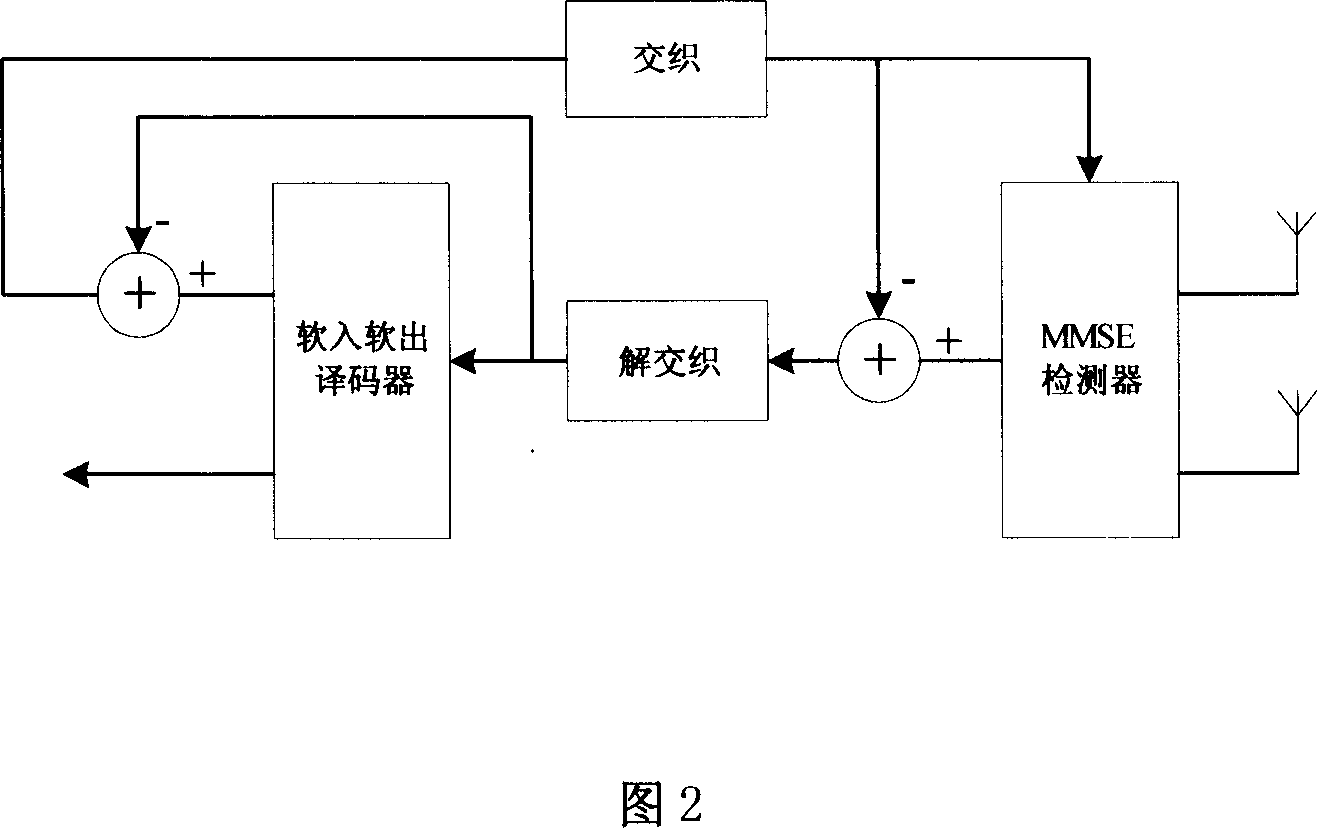A soft in and soft out detection method capable of reducing the complexity
A technology of soft input and soft output, detection method, applied in the direction of preventing/detecting errors through diversity reception, and can solve the problem of high complexity
- Summary
- Abstract
- Description
- Claims
- Application Information
AI Technical Summary
Problems solved by technology
Method used
Image
Examples
Embodiment Construction
[0056] A low-complexity Turbo iterative receiver for a MIMO system with 4 transmit and 4 receive antennas is provided below.
[0057] (1) At the sending end, the information sequence {b m}(m=1, L, K) is convolutionally coded as {c l} (l=1, L, N). In order to resist the burst error of the channel, the coding sequence {c l}(l=1, L, N) is randomly interleaved into {d l} (l=1, L, N). After interleaving, the bit sequence is serially converted into 4 subsequences, corresponding to each transmitting antenna. The block diagram of the transmitter and receiver is shown in Figure 1.
[0058] (2) Bits on each antenna are mapped into symbols and sent out through corresponding antennas. After quasi-static flat channel fading, the signal at the receiving end is:
[0059] the y t =H t x t +n t
[0060] where H t The (i, j) elements of is the channel fading factor from the j-th transmit antenna to the i-th receive antenna at time t, x t =[x t,1 , ...
PUM
 Login to View More
Login to View More Abstract
Description
Claims
Application Information
 Login to View More
Login to View More - R&D
- Intellectual Property
- Life Sciences
- Materials
- Tech Scout
- Unparalleled Data Quality
- Higher Quality Content
- 60% Fewer Hallucinations
Browse by: Latest US Patents, China's latest patents, Technical Efficacy Thesaurus, Application Domain, Technology Topic, Popular Technical Reports.
© 2025 PatSnap. All rights reserved.Legal|Privacy policy|Modern Slavery Act Transparency Statement|Sitemap|About US| Contact US: help@patsnap.com



